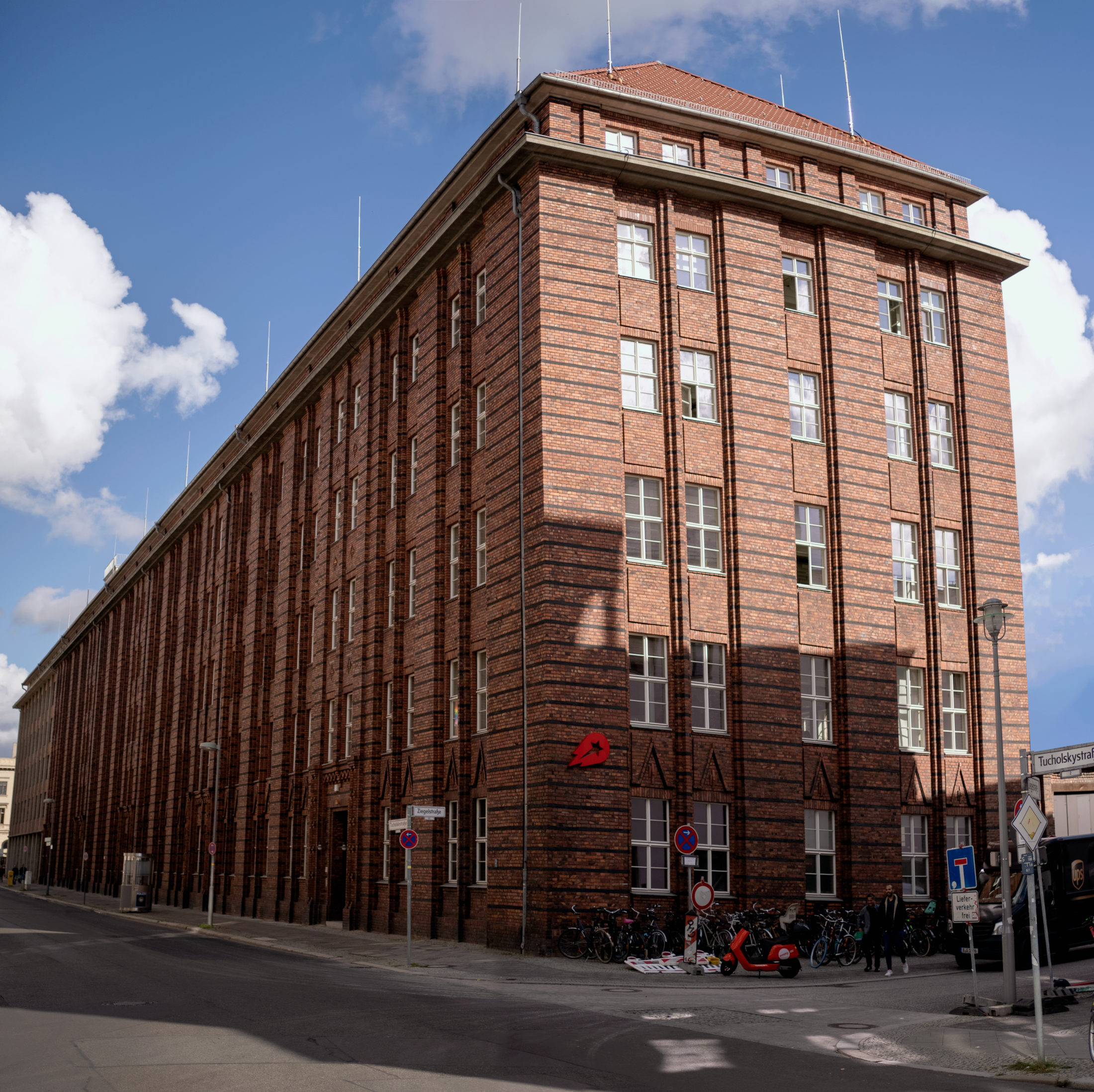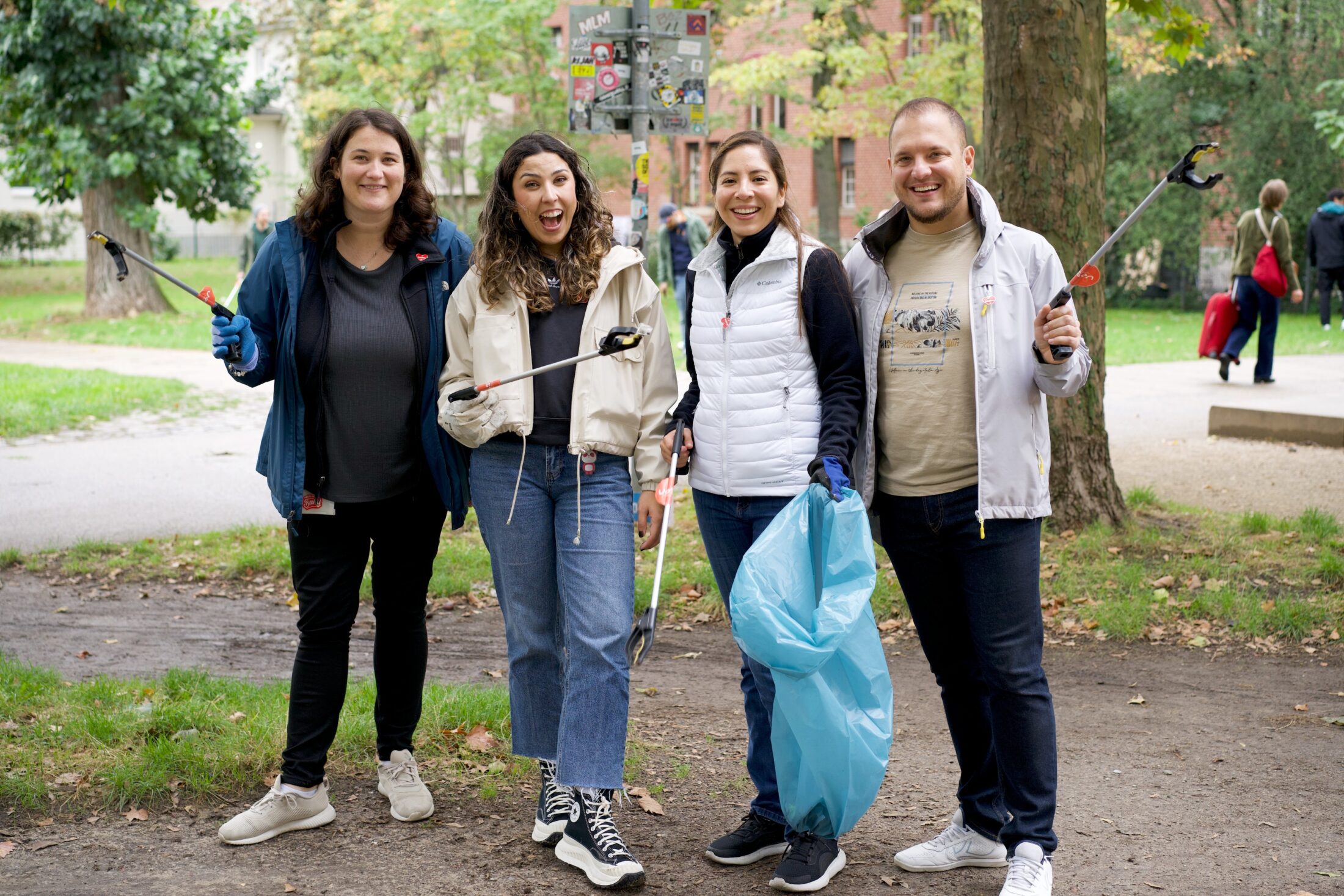Culture & Careers
- December 31, 2021A wonderful day in the neighborhood: Exploring the place Delivery Hero calls home
As we reach the end of another unusual year, going into the office on a daily basis has become less frequent. Spending time with colleagues or having in-person meetings are just some of the things we miss about office culture. However, being away from the office for an extended period means a newfound appreciation for our Berlin Headquarters (HQ). Delivery Hero HQ has a long and rich history and is an important part of the city’s revival.
As we wind down from 2021, we wanted to take a moment to admire the buildings and the area we call home. Read on to find out more about our office and all of its unique features.
The Delivery Hero headquarters are located in the heart of Berlin, in a district called Mitte. The area is full of interesting and important history, including the very building we work from. Although the pandemic has disrupted our daily presence in the office, the development of the area has continued.
The Delivery Hero headquarters are located in the so-called “Forum An Der Museum Insel”, a series of reconstructed buildings, all with historical significance. The oldest building in the area was built in 1789. The area is currently being developed and authentically restored by the architects Sir David Chipperfield and Patzschke & Partner. Delivery Hero moved into its Oranienburger Straße headquarters in 2016 and since then has settled nicely into the neighborhood.
Telegraphenamt and Fernsprechamt
Delivery Heroes headquarters are spread out between the Haupttelegraphenamt and Fernsprechamt. Telegraphen Amt, which means telegraph in German, is built in the neo-baroque style and was the main point for sending telegrams in the city. Sometimes, up to 20,000 telegrams were sent from the main telegraph office through Berlin via a 400 km network of Europe’s oldest pneumatic tube system. If you enter through the main entrance at Delivery Hero you will see nods to its iconic history, including embellishments on the walls. The Telgraphenamt was built in 1916 and used as such until 1992. Once the building was completed, it wasn’t able to be fully used until the end of the First World War in 1918.
The iconic red-brick back half of the building was used as the Fernsprechamt. Fernsprechamt, which in English means telephone exchange or telephone office, has also left its mark on Delivery Hero’s headquarters. If you travel up to the third floor you can see the historical phone lines on the wall, which have been left in as a dedication to the life the building previously had. From here hundreds of telephone operators connected Berlin with the world using the latest telephone technology. As with the rest of the building, it was no longer in use as of 1992.
Postfuhramt
Across from Delivery Hero, there is the Postfuhramt. Its iconic orange color makes it stand out from all buildings surrounding it. Built in 1881, it was a post office until 1995. From 1997 to 2001 it was used as a public art space. In fact, the first Berlin Biennale was held here in 1998-1999. In 2005 it was bought by Ofra Strauss with the intention of further expanding its potential as an art space. However, by 2012 it had been sold on to a manufacturer of medical technology.
The exterior of the building is decorated with 26 terracotta busts of individuals associated with the postal service and communications sector. From the north side of the Delivery Hero headquarters, you have a perfect view of the Postfuhramt and all of its beauty.
New Synagogue
The other noticeable fixture near the headquarters is the New Synagogue, with its beautiful blue hues. The New Synagogue stands in place of the Old Synagogue which was originally built in 1714. The New Synagogue was added in the 1860s as the Jewish community of Berlin continued to grow and there was a need for more space. With room for 3000 people, it was the largest synagogue in Germany at the time. Unfortunately, on 9 November 1938, the Synagogue was attacked by the National Socialist Party and destroyed. The local community came together and restored the building, continued to use it as a place of worship until the 1940s. In 1958 attempts were made to restore it, but the damaged central dome atop the front half was torn down in the 1950s. It wasn’t until the fall of the Berlin wall in 1989 that reconstruction on the front half of the building began. Today the building is used again for services, however, the largest part of the building is used as a museum and as offices.
Delivery Hero sits right in the middle of a historically important neighborhood, much of which can still be felt today. As the area continues to develop, it’s the small nods and preservation of the former life of the buildings that contribute to a rich ecosystem that Delivery Hero is now proudly a part of. Preserving the history allows Delivery Hero to stay connected to its local roots whilst operating on a global scale.





Share